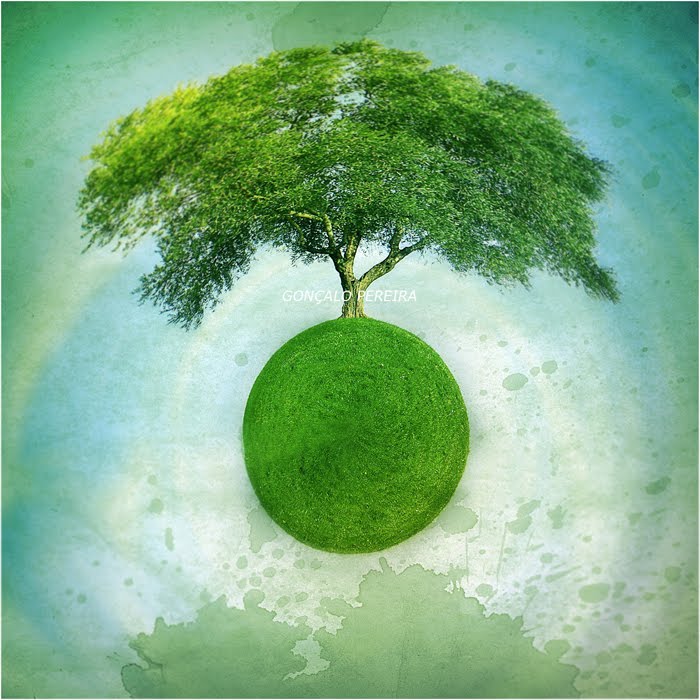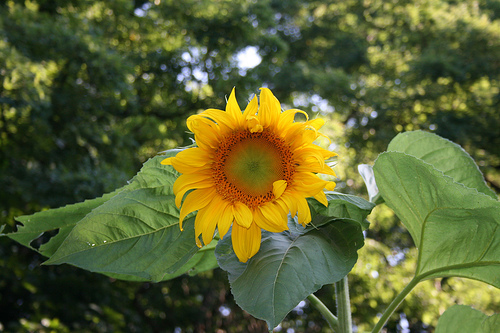 |
Overview |

Gaia Hypothesis as a Gaian Methodology
Overview
The Gaia Hypothesis (sometimes now elevated to the status of a theory, as in Gaia Theory) is a scientific hypothesis regarding the geophysiological self-regulation of planetary systems as evidenced by the planet Earth. Evidencing an emergent level of complexity greater than the sum of its constituent parts, which many theorists describe as having the emergent properties of life (related to complexity modeling), the Gaia Hypothesis has kinship with many ancient cultural and scientific insights regarding planetary ecology. The modern Gaia Hypothesis has spawned many directions of research and inquiry methods, including modeling self-organizing planetary feedback systems such as Daisyworlds, understanding complex geochemical planetary cycles and their long-term qualities, and personal ethnographic and ecological research in applying and extending planetary emergence of life to inquiry.
Gaia Hypothesis as a Gaian Methodology: Roots Stem and Leaf Flower Seeds Annotated Bibliography Quotes Resources |
|
Roots of Gaia Hypothesis as Method |

The Gaia Hypothesis finds its roots in longstanding insights regarding a living planet. For example, Scofield in Scientists Debate Gaia explores over two dozen expressions of the concept of a living Earth in Western natural philosophy, including animism, hylozism, psyche, pneuma, pantheism, sympatheia, anima mundi, and world soul (Scientists Debate Gaia, 2004, p. 157 - See inset). Many affirm that indigenous and traditional cultures feature intact connections and patterns with a living earth focusing on wisdom and intuition (Golley, p. 35; Scofeld, 2004, p. 157) at a nexus point of knowledge, practice, and belief (Berkes, p. 163). These insights, scientific and cultural, parallel and harmonize with more ancient indigenous and earth-based insight regarding the living nature of the planet. See also Ecospirituality and Ecophilosophy forms of Gaian Methods for further exploration of these concepts. The Gaia Hypothesis is a collaborative brainchild of chemist James Lovelock and microbiologist Lynn Margulis and depicts the Earth system as a living, self-regulating, meta-organism continuing optimal life conditions through complex planetary controls. A novel-to-me point of the Gaia Hypothesis is that if a scientist were to imagine what conditions on the Earth would be expected simply due to its planetary size, composition, and distance from the Sun (etc.), the scientist would expect to find a dead, lifeless planet without the temperature, moisture, and other conditions (including those optimum for complex life) found on Gaia Earth. Lovelock's Gaia: The Practical Science of Planetary Medicine (2000) offers fabulous visual examples and visualizations for the "geophysiology" that Lovelock explores as part of the fleshing out of the Gaia Hypothesis. His extended metaphor for the Earth as having a physiology includes later chapters on "The People Plague," fever as a metaphor for global warming, and exfoliation as a metaphor for deforestation. Lynn Margulis's radical visionary insight of symbiosis as the central gyre for evolution has, over the past twenty years, brought endosymbiosis and symbiogenesis from an unaccepted fringe theory to evolutionary doctrine. For Margulis, symbiogenesis (not mutation) is the source of innovation in evolutionary change (2006). She has uncovered how mitochondria and chloroplasts demonstrate that collaboration rather than (neo-Darwinian) competition drive evolution. Her early work on eukaryotic evolution demonstrating global regulatory mechanisms was pivotal in the Gaia Hypothesis (2002). Margulis advocates for collaborations with biology, chemistry and other fields in order to pursue the truth about the complex self-regulatory emergent property of the planet as alive (2006).Therefore Gaia Hypothesis research methods are at their heart inter- and transdisciplinary.
|
|
|
Stem and Leaf of Gaia Hypothesis as Method |

Lynn Margulis, co-innovator of the Gaia Hypothesis, overviews her lifework studying symbiosis as the central driver of evolution in Symbiotic Planet. In "Gaia" (Chapter 8) in particular, Margulis describes the key characteristics of planetary self-regulation at the meta-ecosystemic level. Her systems thinking models of symbiogenesis and planetary geophysiology are foundational for several strains of Gaian methodologies.
Related to the Gaia Hypothesis is the biosphere concept, Russian geochemist Vernadsky's early descriptions of flows of chemicals and particles through living organisms "from the atmosphere to the oceans to the Earth's crust in great cycles" (Golley, 1998, p. 33) of active planetary self-regulation. Vernadsky's original biosphere concept has some similarities and some differences with Lovelock and Margulis's Gaia Hypothesis. Golley's discussion of the implications of the ecosphere/Gaia/biosphere constructs includes a sensitive (if brief) exploration of how humans can relate to such large systems as the Earth system. He mentions the work of several ecopsychologists and deep ecologists in making this eco-emotional leap, including Arne Naess (Deep Ecology, etc.) and Delores LaChapelle. Golley recommends deep ecology's tools and practices for connecting personal self-cultivation with a relationship with the planet. Golley notes that one application of the Gaia Hypothesis could be to further ecodesign of built environments. Westerners, having lost connection with the larger intuitive sense of the living system of the planet, have traded our ability to adapt to the natural environment for entrapment in the built environment and subsequent self-fulfilling reliance on increasing technological solutions to escape the woeful consequences of this same human-built environment. He proposes a shift to technological and built environments synthesized with natural environments, with set-asides for ecospheric reserves outside of human management and the synthesis optimized for adaptation. Gaian food for thought on a global scale...
Abram on Gaia: "For by explicitly showing that self-organization is a property of the surrounding biosphere, Gaia shifts the locus of creativity from the human intellect to the enveloping world itself. The creation of meaning, value, and purpose is no longer accomplished by a ghostly subject hovering inside the human physiology. For these things — value, purpose, meaning — already abound in the surrounding landscape. The organic world is now filled with its own meanings, its own syntheses and creative transformations. The cacophony of weeds growing in an "empty" lot is now recognized for its essential, almost intelligent role in the planetary homeostasis, and now even a mudflat has its own mysteries akin to those of the human organism."
|
|
|
Flowering of the Gaia Hypothesis as Method |

Margulis on the Gaia Hypothesis: "The Gaia hypothesis is science. The surface of the planet, Gaia theory posits, behaves as a physiological system in certain limited ways. The aspects that are physiologically controlled include surface temperature and atmospheric composition of reactive gases, including oxygen, and pH, and acidity-alkalinity.... Gaia, meaning a body with a controlled physiology in the celestial-planetary and biological sense, is the only name that can both unite a disparate group of scientists and make their whole work accessible to the international public. Just as the human body is sharply bounded by skin, temperature differences, blood chemistry, and a calcium-phosphate skeleton, so is Earth distinguished from its surroundings by its persistently anomalous atmosphere, its steady temperature, and its unusual limestone and granitic rocks....The planet's surface is not just physical, geological, and chemical, or even just geochemical. Rather, it is geophyisiological: it displays the attributes of a living body composed of the aggregate of Earth's incessantly interactive life." (Symbiotic Planet, p. 123)
The Gaia Hypothesis is one fertile source of the current understanding of "the formative role of life in the biosphere's biogeochemical cycles and climate [which] serve as an active feedback mechanism for biogeoclimatological control" (Schneider, 2004, p. xiii) – rather than through means of a global scale teleology, as an emergent property of the complex Earth system (xv). This MIT book, Scientists Debate Gaia: The Next Century, offers thirty-one applications and explorations of the Gaia Hypothesis and its methodologies, ranging from the study of earth worms, planetary modeling, rainforest ecology, deglaciations, food web complexity, and Daisyworlds, to extraterrestrial Gaias. The book is structured to explore Gaian principles and processes in earth science, thermodynamics, regulation and natural selection; biosphere and ocean feedback, phanerozoic eon biogeochemical Earth models, life driving disequilibrium, and other Earth history and cycles; philosophy and human dimensions of Gaia—including complexity, gradient reduction, observer self-selection, and planetary models of human-Earth systems; quantitative inquiry of daisyworld modeling, artificial life, biogeography, and feedback modeling between water and vegetation in African climate systems; and lastly research on life forms and Gaia. Scofield in Scientists Debate Gaia explores over two dozen expressions of the concept of a living Earth in Western natural philosophy (p. 157). Darwin's last book on earthworms and soil ecology also lays the groundwork for geophysiological understanding of earth and a living Earth (Crist, pp. 161-170).
|
|
|
Seeds of Gaia Hypothesis as Method |

Stephen Harding's Animate Earth offers a fusion of Gaia Hypothesis and Deep Ecology methods for personal ethnographic inquiry, for cultivating a personal relationship with the living earth. He weaves together science and meditation, inquiry at the level of people and planet to extend the Gaia Hypothesis into relational development.
Scientists Debate Gaia also offers seeds of new inquiry in everything from geoclimatological modeling to cultural inquiry in a wide range of qualitative and quantitative studies. Daisyworld modeling offers another aspect of extending the Gaia Hypothesis into Inquiry. To demonstrate how global supereffects of dynamics of shade and sun in a simple plant system could effect global self regulation, Lovelock developed models and eventually computer simulations for what are termed Daisyworld scenarios. This four-part youtube video of James Lovelock makes the connections [see right panel].
The Earth as a Self-Replenishing Living System
Whether understood as an organism, a system, or a complex emergence, the Earth is alive. Understanding the Earth's autopoiesis is vital to leveraging the Gaia Hypothesis as research methodology. There is an important distinction between understanding the biosphere and cycling of materials versus the Gaia Hypothesis. This relates to complexity and the concept of autopoeisis. Golley relates the Earth system as the ecosphere (ecological sphere, literally sphere of connections), emphasizing both its spherical visual unity and its environmental nature as a bounded system of layers (atmosphere, hydrosphere, lithosphere, and biota) of energy flows, chemicals, and organisms, with solar inputs and infrared outputs. Berkes objects to this type of cog and wheel version of cycling (e.g. Odum, 2005, p. 51) that desacralizes the alive quality of the planet (p. 183). Hornborg also critiques the definition of ecosystems as a mere system of matter and energy transactions (2001, p. 183). The Noosphere and Biosphere Reader (1999) also explores these intersections of frames between ecosphere, biosphere, noosphere, gaiasphere, living system, and living being. Clarifying the relevant frame on this spectrum for research helps clarify which access point the Gaia Hypothesis will yield fruitful research directions, from scientific and quantitative to complex and qualitative.
|
|
|
|
|
 |
 |
|
Gaian Methodologies - A Convergence of Sensuous Earth

Gaian Methodologies Team
The main resources on this site include how the flower petals of sources and methods grow together to compose the flowering of Gaian methods and methodologies. We include essays and bibliographies to nurture... More…

Prescott College PhD in Sustainability Education
Prescott College offers a Doctor of Philosophy (Ph.D.) in Education with a concentration in Sustainability Education. This low-residency, doctoral program combines expansive interdisciplinary inquiry with intense individual research and practice, and follows a cohort-based learning model...More… |
|
|
 |
|
|